#so. I often will spend multiple days mulling over ideas for that months designs. so I'm not very ahead at all haha
Explore tagged Tumblr posts
Text
How The Spaces Students Are Living In Affect Their Well-Being And How Textiles Can Improve These Environments (pt2)
Creating Cosy Comfortable Living Spaces
Students may not get much choice in how their accommodation looks or what furniture is in their rooms when they move in, but that doesn’t mean they can’t dress it up and give their own personal, cosy touch. My first-year accommodation had concrete cinder block walls, harsh lighting and a single small window. However, this didn’t stop me from trying to make the room as cosy and inviting as I could. There are many simple, easy and cheap ways students should be able to do this. Hygge (pronounced hoo-ga) is one of these ways.
The art of creating a warm, welcoming, cosy space can seem to elude many people. Whether this is due to time restraints, costs or motivation, many people’s living spaces can and will remain bare and cold. The Danes, on the other hand, are people who prioritise the atmosphere within their homes and bedrooms and dedicate time and energy to creating cosy spaces. Hygge, is the term used by the Danes to describe their attitude toward how life should be lived, and is a large factor as to why Denmark is ranked as one of the happiest countries on earth despite it being cold and dark for most of the year.
If you have ever wondered why the Danish seem to be obsessed with interior design, it is because they see the home as the Hygge headquarters, their homes are the centre of their social lives, always inviting friends and family round to experience Hygge together. Hygge originates from the Norwegian word meaning “well-being” and roughly translates to ‘cosiness’ in English, but it is much more than simply feeling cosy. Hygge is being curled up by a fire with cosy socks on and drinking mulled wine, its sitting in a café reading your favourite book and sipping coffee, its being together with friends and family around the dinner table all enjoying a cooked meal together. Hygge is more than a feeling, it is an experience of content and togetherness which can last a few fleeting moments or an entire evening. To the Danes, Hygge is a way of life.
Meik Wiking, the founder of The Happiness Research Institution, in his book ‘The little book of Hygge; the Danish way to live well’ wrote ‘Hygge is about giving your responsible, stressed, achiever adult self a break. Relax. Just for a little while. It is about experiencing happiness in simple pleasures and knowing that everything is going to be okay.’ (Wiking, 2017)This mind set is how young adults, if not everybody, should treat life. How can people expect to stay high functioning, successful and happy with their busy day to day lives without putting effort into treating themselves and enjoying the little things? Life isn’t meant to be so strict and demanding, all the deadlines and assessments need to be balanced with restoration periods for the body and mind else breaking down may be inevitable. Appreciating the little things can be made a lot easier if we surround ourselves with things that can be appreciated in our living spaces. Appreciating the little things and experiencing happiness through simple pleasures could be achieved as simply as making a cup of tea and lavishing the few solitary moments you found yourself with, or it could be much more deservingly indulgent with hot chocolates and throws and pillows and candles and incense.
A hyggelig interior is as much about how things feel as how things look. We perceive the world through our 5 senses; sight, touch, smell, hearing and taste. These senses integrate to help us create perceptions and memories and can trigger emotions which, as we go through life, allow us to build a library of experiences. These experiences are what inform future decisions as to what we do and don’t like, so why not surround ourselves with what we know we like? Think about how the materials you are sitting on and touching feel, are they soft, fluffy, bouncy, warm, is there lots of mixes of textures, do you like them? Textures are so important as they can be a way of creating the sensation of being hugged, and who doesn’t love being hugged? Everyone loves being hugged or touched as this action releases the hormone called oxytocin, the hormone of love.
Oxytocin is an important hormone when it comes to our well-being as it has physical, emotional and psychological effects on the body, including influencing social behaviour, personality traits and reducing stress and anxiety. This hormone is also a neurotransmitter that is involved in motherhood, child birth and sexual behaviour. Research published by Psychopharmacology suggests that oxytocin has been found to improve self- perception in social situations and increases likeable personality traits such as trust, openness, empathy and altruism (Psychopharmocology , 2012). Other researchers reported that people in the early stages of a romantic relationship had higher levels of oxytocin in their bodies for at least the first 6 month, this was compared to single, unattached people (MacGill, 2017). There is so much evidence showing that this hormone changes our mood for the better so it would make sense to surround ourselves with soft, cosy, comfortable materials that improve the production of oxytocin. These material things then become a form of self-care which naturally promote well-being and enhance the aesthetics of a room all at the same time.
Despite cosy material things being important for self-care, they can be underappreciated items that every bedroom benefits from but don’t always contain. Students tend to not want to spend money on things they don’t feel they need, but cosy throws, pillows and rugs can completely change the atmosphere and comfort of a room. These necessities can be purchased cheaply from charity shops or online, or can even be made by hand with simple instructions and materials. Making these items by hand may possibly make them even more hyggelig as they then hold sentimental value and the experience of crafting them can be therapeutic. This is one of the best things about Hygge, it can be cheap, sometimes even free, there is nothing extravagant or luxurious about a chunky knitted jumper or a pair of ugly woollen socks. An intrinsic feature of Hygge is that it is humble, slow, and easy, it is choosing simple over posh. This is so true in Danish culture that bragging about your wealth and flashing expensive material things is considered poor taste and frowned upon because it breaks the sense of Hygge. Helen Russel, author of ‘The Year of Living Danishly: Uncovering the Secrets of the World’s HappiestCountry’, wrote in an article for the Independent, ‘The best explanation of Hygge I’ve encountered during three years in the land of Nord is: “the absence of anything annoying or emotionally overwhelming; taking pleasure from the presence of gentle, soothing things.”’ (Russell, 2015)
The Hygge Manifesto
In The Little Book of Hygge, Meik Wiking has created the Hygge Manifesto, a sort of checklist for achieving Hygge in your own home. The manifesto is as follows;
1. Atmosphere
2. Presence
3. Pleasure
4. Equality
5. Gratitude
6. Harmony
7. Comfort
8. Truce
9. Togetherness
10. Shelter
If these attributes can be achieved then Hygge should supposedly be easy to create. Here I have created a fun and informal list of suggestion, recommendations and inspirations for students and young people to look through, hopefully helping them gain some ideas as to how Hygge can improve their living spaces -
Atmosphere
· Turn down the lights. Things like side lights, fairy lights and candles can create a soothing and warm atmosphere within a room, instead of the harshness of a single main light source.
· Although the Danes may prefer non-scented candles, I would recommend fragranced candles and incense as to fill the room with your favourite aromas.
· Music is also one of the fastest ways to create an atmosphere in pretty much any situation. Put on your favourite tunes in the background of whatever you are doing and I guarantee it will lift your spirits. (especially if you’re cleaning or doing dishes) I’d recommend investing in a speaker if you are able to as you will notice and appreciate the sound quality.
Presence
· Think about all the times you have wasted 30 minutes or so scrolling through Facebook or Instagram gawking at other people’s lives. Why not put down the phone and spend that same time thinking about yourself. Try listening to music, reading a chapter of a book or maybe drawing or writing about something that has happened that day.
· If you are with others, such as friends or family, then try leaving your phone in another room and giving all attention to the conversation.
· You may cringe when hearing this, but it is truly about living in the moment, even if that moment only lasts a few minutes. Those moments may be the only time of peace you get during that day so why not savour it? Afterwards you will be able to think about how good those few moments were and will start naturally enjoying the moment more often.
Pleasure
· Don’t be afraid to give yourself what you enjoy, you deserve it.
· Shamefully indulge – cakes, chocolate, coffee, crisps, all these things can help sweeten the workload.
· Cooking yourself a big meal can be the height of pleasure, especially if you have dessert too. Don’t worry if you feel you’re not a good cook or you don’t have time every night, even if you make a big dinner once or twice a week can be enough and can become something to look forward to.
Comfort
§ Take a break, even if it is just for half an hour.
§ Find what makes you relaxed and surround yourself with it. My personal favourites are big fluffy slippers, thick heavy blankets, and multiple layers of comfy clothing.
§ Throws, rugs and large wall hangings give the cold, bland surfaces of your room an extra lift of texture, colour and comfort and can be found relatively cheaply in charity shops, emporiums and re-use centres.
Harmony
· It’s not a competition! If you’re hanging with friends or family then try to remember to not brag about achievements or material things too much, this breaks the sense of Hygge. Try to start conversations about things that inspire you. This could be movies, books, nature, music, things you want to do or places you want to go.
· Sharing the air time during conversation is also very important. Listen to your friends and allow them to voice their opinions, and hopefully they should do the same for you.
· Trying to build a sense of togetherness can be fun. “Do you remember that time we…” is one of those gateways of conversation that allows us to reminisce about old times, strengthens relationships and makes way for future plans.
Gratitude
· Allow yourself to be grateful for things, grateful that the sun is shining, grateful if your flatmate makes you a cup of tea, grateful for whenever you get to have a long lie in in the morning.
· It is easy to get annoyed and frustrated, especially once you get tired and stressed out by the day, being grateful for the little things can really help shine some light and speckle the day with positivity.
Personalisation
· Posters, wall hangings, keep sakes, nik-naks and plants are essentials for making a room really feel like your own.
· Sentimental items are especially good as decorations too, things like postcards, letters, movie or concert tickets, leaflets from events and drawings can all help personalise your room.
· For me, and I am sure many others out there, plants are a necessity within their living spaces. Plants clean the air in your room and have been proven to reduces levels of stress and anxiety and improves levels of productivity (Chignell, 2018). It is easy to get attached to plants as you get to watch them grow and change over the months thanks to them needing watered and cared for. Plants can also surprise you occasionally with new leaves or stems beginning to grow and pops of colour from flowering plants.
Crafts
· Handmade crafts can be a very therapeutic experience which allow you to focus your brain on something other than your phone for a little while.
· Try out crafts such as knitting, weaving, crochet, sewing, drawing, painting, collage, sketch booking.
· Making physical objects can be so much fun and gives you something sentimental to be proud of to have made. If you really enjoy it then there is even the possibility of selling some of these objects you have crafted.
Everyone needs to take the time to take care of themselves, mentally and physically. These suggestions are just a few small ideas that can really add up to feeling less stressed, more content and ready to take on and deal with the pressures of life and university. So, next time you’ve had a long tiring day and go to watch TV or scroll through Instagram like you usually do, why not try listening to music, reading a book, playing board games with friends or making some food. These things can seem like arduous tasks when tired but are almost always worth it, and will allow you to forget about the stresses you were obsessing over earlier that day, even if just for a moment.
Music
Music can make any situation better, such as getting ready in the morning, cleaning the flat, doing dishes, showering, hanging out with friends, doing course work or relaxing. Imagine a party without music, a movie without music or a sports event without music, it’s just not the same, is it? A life without melody of any kind would be dull, boring and unimaginable.
Music is essential for almost all aspects of life. It is much more important than what people may realise, it is arguably one of the most intrinsically human things created. The Netflix original series ‘Explained’ has a very interesting episode explaining how and why music is so important to the human species. Music is uniquely human; no other living thing can comprehend music quite like we can. There has been extensive experimental evidence documenting that people have a deep connection between music and emotions (Feiles, 2018). Music of any kind, from Classical to Grime, can help anyone get into the right frame of mind and has even been shown to make people treat each other better. The things music can do for your mood is wonderful, if you want to feel happy then play some happy songs and allow the chipper beats to brighten your mood. The most important reason we listen to music is for pleasure (DNEWS, 2011), we create and admire music because we enjoy it so greatly so why not play it as often as possible?
Exploring the music world can be a very fun and interesting experience, especially if you are beginning to get sick of your current playlists. There are thousands and thousands of songs, albums and artists on Spotify, YouTube, SoundCloud or Apple Music, so why not delve in for an hour and see what you can find. Listen to your friend’s public playlists and add songs you like to your own playlists. The discover weekly and suggested songs features on Spotify are key tools for broadening your music library and keeping things interesting. Personally, I always keep a very open mind when listening to new songs or artists. I find it is very important to not be put off by music just because it isn’t in the charts or because it’s not what your friends are listening to. If you like a song then save it, listen to and find more like it. Don’t be afraid to branch out your music tastes, always be on the hunt for more music, the discovery of a new song you like can really help keep life interesting. Let your music library grow and evolve with yourself and it will help you get through pretty much any situation.
Còsagach (Cos-se-coh)
Còsagach is the Scottish equivalent lifestyle trend set to rival the Danish Hygge. Còsagach is an old Gaelic word for the feeling of being snug, sheltered or cosy. The Visit Scotland tourist board is encouraging businesses to create escapes that ooze a sense of warmth, cosiness, tranquillity and most importantly Còsagach that allow visitors to unwind. To a Scottish person, Còsagach is most likely second nature even if they never realise it.
Còsagach is all about taking shelter from the cold and harsh weather - which we get in abundance in Scotland - in warm, cosy log cabins, bothies or more importantly, pubs. Visit Scotland says Scotland’s “tranquil seascapes, vast open valleys and many warm and welcoming pubs make it the ideal place to boost wellbeing and contentment.” (Frost, 2017)There is something about going to the pub with a couple mates that really allows us to unwind and forget the stress of the day. Whether you drink alcohol or not, even just being in that cosy environment laughing away with friends or family is relieving, especially if the rain is lashing down against the windows outside and there is a roaring fire crackling away inside. It doesn’t matter if you’re catching up with mates, celebrating, having some pub food or just simply treating yourselves to a pint after a long day, the pub is somewhere everyone can unwind. Why not invite mates to meet at the pub every now and then, and if not everyone wants to go to a pub, then cafes, parks, even your universities Student Union are all places that can harbour a catch up with your friends. And if you do go to the pub, then the ring of the bell after last orders is always a time to notice the fondness you have felt all evening, and wonder on home full of content, or maybe run home if it is still pouring with rain.
First Hand Hygge-fying
As an experiment to see how effective the look and feel of a room can really be on well-being, I helped a friend hygge-fy their bedroom, turning it from a bit of a mess to a very welcoming, cosy space.
The bedroom mainly just needed a clean and tidy, but we added a few things and moved the furniture around a small amount to help make it feel more comfortable and inviting. We added loads of different textures to the room with extra blankets, throws and pillows to the bed and chairs. We also hung paintings, posters and prints we bought for pennies at an art fair, although there was still plenty more space on the walls for more personal touches, and I suggested he find items he liked to fill these spaces with. We also bought some ornaments from charity shops and some plants from a plant sale the university was holding at the student union which really helped the room become a much more nurturing environment. We also made sure to have music playing from the big speakers while doing this which turned it into quite a fun experience when usually tidying your room is an arduous and draining task.
Once we finished re-arranging his room, my friend told me, “I feel much more comfortable in my bedroom already and find it a much nicer environment to come home to after a long day at university. It genuinely feels warmer and cosier which I love as I find I can de-stress easier.” I was glad to hear this reaction as it is shows exactly how much of an affect Hygge can have on a person and their well-being and is how I hope everyone should feel in their living spaces. This transformation was very easy and cheap to do so I am hoping this, along with the list of recommendations above, prompts more people to think about how their bedrooms can become cosier, safe spaces.
0 notes
Text
GBC Blog 1 - Week 1.

Having initially been born in Zambia, I grew up on my parent’s dairy farm in a small village called Upper Minety in Wiltshire, a stone’s throw from Stonehenge and the heart of the Cotswolds.
In Africa, my father had been a financial comptroller working with Meridian BIAO Bank who were helping to finance the transition of the country from Northern Rhodesia into its present day Zambia. My mother, was in essence, a hostess and a mother. However, this was in no way disparaging of her culinary achievements. She had studied with Le Cordon Bleu and had also worked for several years as an au-pair in France when younger.
From an early age, she instilled a love of cooking in me as she felt it was important that, yes even men, should be able to cook. Much to the horror and disgust of my Grandfather - a rather staunch Georgian patriarch. My Grandfather actually walked out when visiting one Sunday for our roast beef dinner upon discovering that I had helped make some of the dishes - as he left, he muttered none too quietly - “that’s a woman’s job, cooking is not for a man to do!”
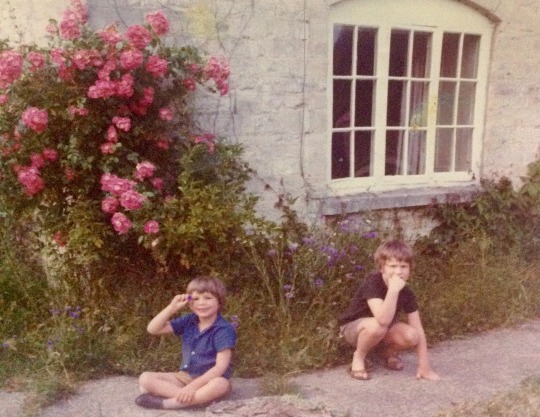
As I was rather a precocious child, this merely instilled in me the interest in the culinary field - as long as it did not interfere with my rather large collection of snakes, lizards, insects and other creepy-crawlies that I kept housed in various crates and jars in my “zoo”.

Upon moving to Canada in 1982, I became more interested in food and would often help with making items from cakes to meringues as well as a variety of savoury items. I even tried my hand at cheese making and could turn out a respectable unpasterised Cheddar.
Later in life, now aged 17, I attended Carleton University in Ottawa to complete my degree in Microbiology - I only lasted until year two as my heart was not in it. My Father told me that if I was not in school, then I had to find a job to support myself. I moved to Toronto and became a flight attendant. That showed him...
For me it was great, I got to travel around the world for free and had the rare opportunity to sample all these new and interesting cuisines. From the amazing and redolent curries of India later in my own travels later in life, to the spicy concoctions in Sri Lanka, I loved it all. France was an eye opener and I fell in love with bread and cheese and Normandy butter. It was a good thing I was young as being a fat flight attendant was frowned up.
Whilst working at the airline, I met the boyfriend of someone who would become a very good friend to me, Charles P. MacPherson - author of “the Butler Speaks” & “the Pocket Butler”. Two books he published after opening his own Butlering School in Toronto and later in New York City. Charles had worked as the Major Domo to the Eaton Family for years, until its dissolution, he then went his own way.
At around summer of1995, my parents had moved back to the UK and lived in central UK, Leicestershire. One Sunday afternoon, my Mother called me asked me when I was going to get a real job? As she rather bluntly put it, you are not 20 any longer… She then, proceeded to tell me that she thought I should follow a career in food. She said that I had always liked cooking and it had far better prospects in her opinion than layovers in Spain or Portugal.
After having mulled the idea over for a while, I contacted the owner of this Chef School in Glasgow that my Mother had told me about. The owner was a very young ex Merchant Navy Navigation Officer, who said very early on that his attempts at cooking initially were disastrous… how soon things changed for him. He trained with the likes of Marco Pierre White and Alastair Little. Shortly after opening his restaurant in the Trossachs Mountains just north of Glasgow, he became the youngest Scottish Chef to win 1 Michelin Star. On the tails of this success, he had decided to open a Chef School and now has two of them, both in Scotland and remains my mentor, as well as a culinary hero of mine. http://www.dailyrecord.co.uk/news/scottish-news/tv-chef-nick-nairn-how-7364539 I called Mr Nairn and said that I was interested in coming and taking his classes. After his initial sort of amazement as to the logistics as to how I would do so, I informed him I would simply move back in with my parents and commute.
A few weeks later and it was chocks away and I was on my way to my new career, as well as having the opportunity to train in a Michel Starred Restaurant.
Upon completion, and whilst gaining industry experience in the now flourishing food world of the UK, I moved back to Toronto and soon found a position working as the Executive Sous Chef at Movenpick Palavrion on Front Street. I kept in touch with Charles and he was over for dinner on several occasions. After working for Movenpick for a while, I was appointed to the position of Private Chef for Hilary Weston when she was our 26th Lieutenant Governor, at Weston’s Family home on Dunvegan in Forest Hill. It was interesting, to say the least, however, I did get the opportunity to work with Galen Weston Sr’s Corporate Chef at the Weston Centre on St Clair and attended several new product development session with Ted Reader who was heading up President’s Choice at that time.
Upon leaving the Weston job, I ended up in large scale Corporate Catering. We mainly did Corporate Luncheons, Lawyer’s Office parties and dinners as well as weddings and the usual slew of Bar and Bat Mitzvahs as well as catering on most of the Harbourfront booze-cruises - some were elegant and some were just an outright nightmare. The start of one’s Honeymoon is never going well when the groom has to be fished out of Lake Ontario after passing out drunk and toppling over the rail.
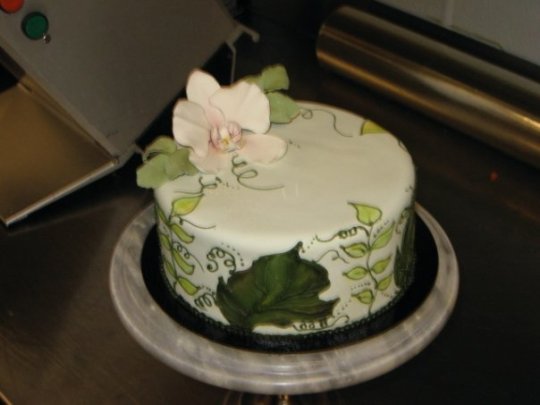
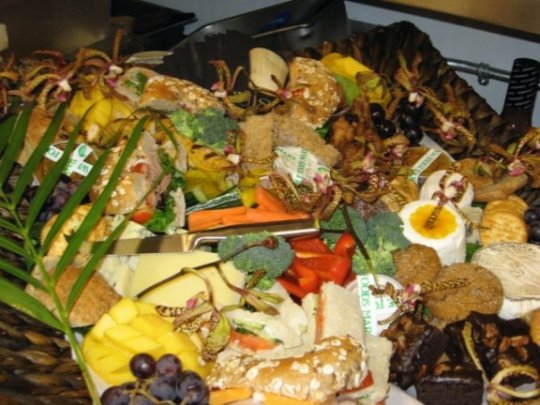
The 90′s were good to me professionally. However, I became a bit burnt out from the excessive long working hours - at one point I was up to 90 hours per week. This really does not allow much of a life or the chance of getting to the cottage etc… So in 1999-2000 I switched careers and went back to school, this time taking a film and television digital graphic design diploma as well as a diploma in web programming and design. The internet was in full swing and business seemed to be booming. Upon graduation, I was offered a position teaching at Ryerson University in their Internet Technology Studies division. I taught there for 8 years, however, even a few years in - if I needed some more hours, I would always pick them up working in a restaurant. Something about the smell that a professional kitchen has always felt almost like a home away from home to me.
Leaving Ryerson, I went on to teach at U of T in their Business & Professional Studies Department, teaching Web Marketing and Visual Design.
In 2008, following the death of my Father, I took a sabbatical for a year and you guessed, returned to the world of food. This time I worked for a year at Whole Foods Market in Vancouver assisting the Manager of the Cheese Counter. Have I mentioned how much I love cheese? It was actually extremely interesting learning about cheeses from around the globe, as well as being able to sample them all and attend cheese training courses.
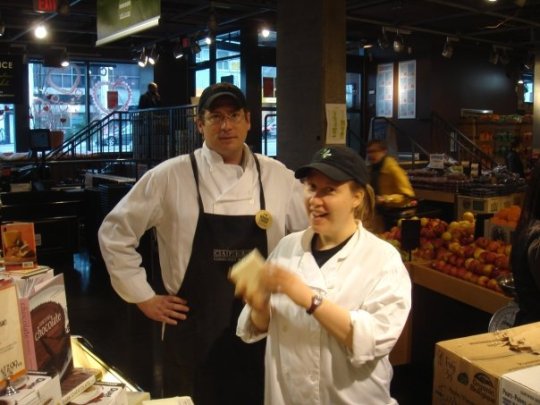
In 2010 I returned to Ottawa to assist with Estate matters and took a job as Sous-Chef at Big Easy’s Seafood and Steakhouse - primarily a Cajun/Creole restaurant- with some more French style specials thrown in - the Chef at the time was a recent graduate of Le Cordon Bleu in Ottawa. He would later become my nemesis - ah the dramas one can find in kitchens all over the world. My friend, Dot Janz, who was overseeing the day-to-day operations, whilst still continuing to run her own restaurant, the Black Dog Bistro in Manotick - recently named “Best Restaurant in Ottawa”- and I decided that one of us would have to go as there was no apparent way to resolve the animosity he felt towards me - either that or she smelled a potential lawsuit. I ultimately returned to Toronto to pick up again at U of T. I did, however, get the opportunity to assist in executing a dinner for Chef Michael Smith - who was in town for his new book launch. What a lovely individual - and so tall, I am 6′2″ and he towered over me, much like Julia Child would have at one of Charles’s book launches at the Cookery Book Store in Yorkville - but alas it was not meant to be, Ms Child had to cancel due to illness and shortly after passed on.
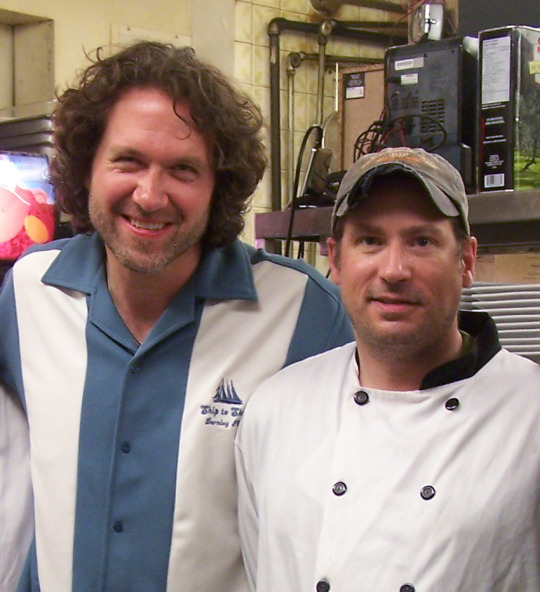
In 2014 I was hospitalised with a variant of Multiple Sclerosis, a hereditary neuromuscular disorder which left me bed-ridden for nearly 3 months and with a permanent disability. Not one to be discouraged, I did not go the dark route that quite often people do go down - seeing no hope at having any semblance of normal life again, but not one to be discouraged, I worked my physiotherapy and hundreds of visits to Drs and specialists and neurologists - it’s really fun spending 50% of your time in hospitals and Dr’s offices for nearly 2 years.
In 2016 I decided I was well enough to return to work - however U of T had summarily dismissed me - they are not as inclusive as they make out to be. Never one to back down from a challenge, I enrolled for my accelerated paralegal diploma and am graduating May 17th, 2017. After I earned my diploma, I thought long and hard if that was a route that I wished to go down. - did I have the passion and drive to a field, that to be truthful, is more often than not filled with rather less than desirable people. Don’t get me wrong, the hospitality industry has it’s fair share of prize individuals as well - the drunk sous-chefs, the pastry chef who steals all your mise-en-place and feels that she can get away with it because she is screwing the chef!
After deliberating for a few days, I decided that the answer was a very resounding no - I like having the legal knowledge and did most of my specialisation work in the field of disability law and human rights. My heart wanted to go back to cooking and food.
George Brown was the logical fit as I wished to take the H119 Program Nutrition, however, this does not start until September, and as you might realise by now - patience is not really one of my virtues when it comes to getting things done in the present. I am not a fan of waiting for opportunity - I feel one has to ultimately do what is best for you - having overcome some not so insignificant hurdles in the past, I met with Chef Alvares and we discussed starting in May, since most of the core classes are the same in H100 and H119, he assured me that come September it will be easy to simply to a transfer into the H119 program. My intent is to focus on the nutrition for the lower income/disabled communities as well as product development and marketing.
So that, in a nutshell, is my first blog for Chef Centeno at George Brown College who is teaching us our Theory of Food I class. Whilst, not a novel - maybe let us call it a novella!

Life, lemons… I think there might be something to the time old adage about lemonade!!! Until next time…
Oh and in conclusion - I am not a fan of blogs - I rarely find other people’s experiences are as interesting as they think they are - mine included, nor are they usually particularly well written. If I were to associate whom I feel might have actually been worth following as a blogger - then that would have to be the great man himself. The man who told the world to “tell me what you eat and I will tell you what you are!” That of course was the brilliant gastronome Jean Anthelme Brillat-Savarin.
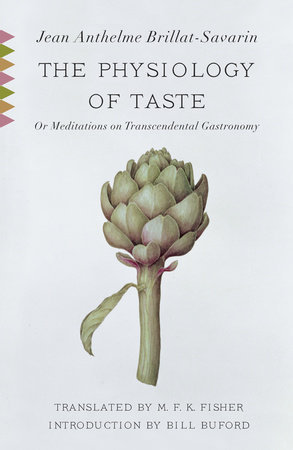
http://www.penguinrandomhouse.com/books/18327/the-physiology-of-taste-by-jean-anthelme-brillat-savarin/9780307390370/
Respectfully submitted May, 9th 2017 for Professor Centeno George Brown College.

0 notes